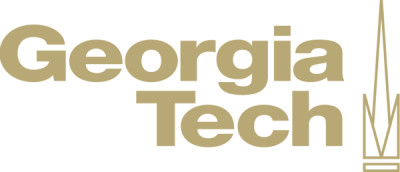A brief history of the healthcare informatics field emphasizing long recognized key capabilities and the reasons for their slow adoption. An introduction to the Fast Healthcare Interoperability (FHIR) standard and its transformative potential. This is illustrated by an interview with the clinical team developing a FHIR based tool for use in an ICU environment. A survey of the problems and challenges facing healthcare systems around the world and in the US in particular. An introduction of chronic disease and its key role in rising healthcare costs. Alternate care models that show promise of improving healthcare outcomes while lowering cost and their dependency on the use of information technology. The concept of a Learning Healthcare System that continuously improves using informatics to glean new knowledge from actual patient care and feed it back to providers as they take care of future patients. An interview with a team of Emory researchers that are using a FHIR-based tool to help lower the cost of hospital care while improving outcomes. A discussion of electronic medical records, the federal programs to stimulate their adoption and the challenges physicians have in using them. An interview with the lead of the FHIR effort at the major health IT vendor Cerner. A detailed discussion of the rich array of patient-facing informatics tools and approaches used in the past and being increasingly deployed at present. An activity using Microsoft’s Personal Health Record system for patients. A detailed discussion of the complex technical and policy issues surrounding the sharing and exchange of confidential health information. An interview with a Blockchain expert and with an expert on data models for sharing of healthcare information for research,
Overview
Syllabus
Lesson 1 - Some Background
1.1 - Introduction
1.2 - A Brief History of Health Informatics
1.3 - Exciting Times
1.4 - eICU Interview
Lesson 2 - The US Healthcare System
2.1 - Introduction
2.2 - High Costs, Mediocre Results
2.3 - The Uninsured Can Raise Costs (part 1)
2.4 - The Uninsured Can Raise Costs (part 2)
2.5 - The Payment Model
2.6 - Waste
2.7 - Chronic Disease Drives Most Costs
2.8 - Dr. Gerard Anderson Interview
2.9 - Alternate Care Models: HMO
2.10 - Alternate Care Models, The Patient Centered Medical Home
2.11 - Alternate Care Models: Accountable Care Organizations
2.12 -The Role of Health Informatics
2.13 - Toward a Learning Healthcare System
2.14 - Informatics for a Learning Healthcare System
2.15 - Case Study: Dr. John Sweeney Onsite at Emory
2.16 - Case Study: Dr. James C. Cox Onsite at Emory
Lesson 3 - Health Informatics in the Real World
3.1 - Introduction
3.2 - The Adoption Challenges
3.3 - HITECH
3.4 - EHR vs. EMR
3.5 - Health IT Certification
3.6 - Meaningful Use
3.7 - Physician EHR Satisfaction
3.8 - EHR Challenge
3.9 - Cerner's Tate Gilchrist Interview
Lesson 4 - Health Informatics in the Real World
Today: Patient Tools
4.1 - Introduction
4.2 - Personal Health Records (PHR)
4.3 - PHR Challenges
4.4 - HealthVault Exercise
4.5 - Medilo's FHIR App
4.6 - Care Evolution's FHIR Based PHR Introduction
4.7 - Care Evolution's FHIR Based PHR
4.8 - Apple's FHIR Based PHR
4.9 - Blue Button on FHIR Introduction
4.10 - Blue Button on FHIR Interview
4.11 - OpenNotes
4.12 - OpenNotes Helps Make Care Safer: Effective Communication
4.13 - Open Notes Helps Make Care Safer: Stronger Partnerships
4.14 - PatientsLikeMe Introduction
4.15 - PatientsLikeMe Interview
4.16 - Telehome Care
HealthVault Activity
Lesson 5 - Health Informatics in the Real World Today: Health Information Exchange (HIE)
5.1 - Introduction to Interoperability
5.2 - Clinical Information Modelling Initiative (CIMI)
5.3 - Applicadia Introduction
5.4 - Applicadia Example
5.5 - Semantic Interoperability Through Machine Learning
5.6 - Interoperability and Meaningful Use
5.7 - HIPAA
5.8 - Privacy
5.9 - Security
5.10 - Trust
5.11 - Blockchain for Healthcare Jeff Garzik Interview
5.12 - Health Information Exchange Direct
5.13 - Health Information Exchange: HL7 Messaging
5.14 - Health Information Exchange: Semantic Interoperability
5.15 - OHDSI/OMOP Dr. Jon Duke Interview 1
5.16 – Health Information Exchange challenges
5.17 - The Future of Health Information Exchange
Taught by
Mark Braunstein

